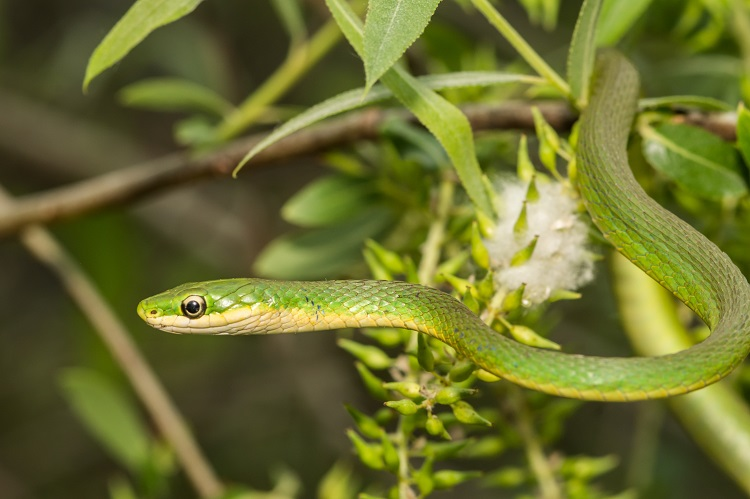This article titles "Aspects of the Natural History of the Rough Green Snake, Opheodrys aestivus (Colubridae)" written by Steven K. Goldsmith. explored various characteristics of the rough green snake. This mainly includes the general micro-habitat and fecundity of individuals found, as well as where snake which don't live close to water hydrate themselves, and where green snake egg clutches are laid. Specimens were found by methodically walking through a given habitat area.
The biggest takeaway was the location of the specimens found. It was evident that most snake micro-habitats were located on edge locations. That is, the edge of stream banks and creeks, the lower parts of trees, forest edges and ravines. Though the majority were all found within close proximity of standing water (62% of specimens). Of all specimens, they had very specific vegetation and height of micro-habitat, all located in dense brush wherever their edge-habitat was located. The average clutch size for eggs was around 5.5, and were found in rotting logs, near rotting logs, and among moss beds. They also found that juvenile specimens were found on the ground, while adult snakes were located in arboreal locations. Only 2 larger juveniles were found in arboreal spaces.
They also found that those snakes who did not reside close to standing water were seen drinking from water droplets of dew on moss beds and pools in leaves.
Additionally, they found that snakes had a variety of responses to contact with other snakes. In a laboratory setting, snakes put in chambers together would be extremely jumpy and flee in the infrequent times the snakes made contact. Those snakes that were familiar with each other, however, made frequent contact with no reaction. The purpose of the jumpy reaction is thought to knock the other snake off the branch.

1 comment:
Interesting information! Do you think this info could be useful for conservation or management purposes?
Post a Comment